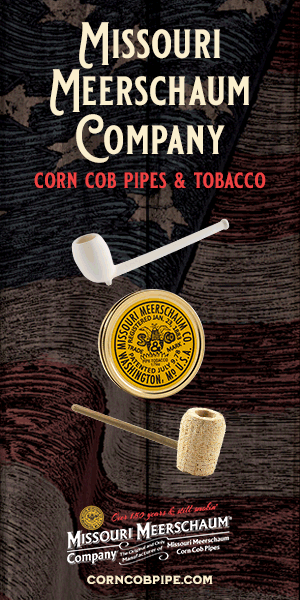OK, OK, OK, I am neither a tobacco guru, nor an expert, but I do grow tobacco, and I have grown up around tobacco farming.
The reason why cigarette tobacco used in pre-made factory cigarettes sucks is because they remove all of the oils, juices, and nectar from the tobacco in processing, leaving behind dry cellulose, and reformulate the stuff and re-case it with the mix to control tars, nicotine, and taste. I've actually been to the factory to see this.
But, as far as from the field, pipe tobacco comes from the exact same places in some instances. This has been the appeal of RYO bagged pipe tobacco since it has started. The bagged blends are more natural and even taste good in a pipe, thus making a superior cigarette to pre-made cigs.
Cigar tobacco is really not that much different from regular burleys. There is a plethora of different flavors among cigar plants, and despite popular consensus, it is less about where the seed was soiled than it is how the leaf is cured. If we color cured a Tennessee burley and fermented that leaf like a Nicaraguan leaf, you'd get something closer to a cigar flavor. You wouldn't get something "exactly" like a particular type of cigar, but it would be more cigary. And, if you grew some Havana seed and treated it like a regular ol burley, you'd get something that tasted closer to a semois or Tennessee burley.
The plant is a plant, is a plant. Yes variety is important for getting "exact" flavors, but for the most part, how it is prepped makes the most difference.
Al;so, to get variations in brightleaf varieties, that we call Virginias in the pipe world, you treat the leaf closer to how a cigar leaf is treated for socialization, cure, color cure, fermenting...
So, this notion of cigar leaf, pipe leaf, chewing tobacco, and cigarette tobacco is merely in the heads of the consumers. To the farmers, not so much. They just work towards meeting expectations. But, all in all, the differences in varietals is more like the differences in apples, and not apples to oranges.
Also, in regards to where the leaf is located on the plant. The top leaves are where more flavonoids are, not because of the top leaves getting more sun, because they are the newest leaves on the plant. Bottom leaves are the oldest and have had 90% more sun that the brand new top leaves. But, the top leaves are what grew as the flowers were developed, developing a strong aroma to attract pollinators. And, it is were more nicotine was developed as a result in surges of flavonoids.
Bottom leaves are thicker, older, and have more sugars, but not flavor. It actually has less of that distinctive "tobacco-y" flavors. I love snagging the dried sand lugs off of a developed Virginia and loading my pipe with it in the field. It's a sweet experience. But, teh top leaves of a Virginia... Right after flue curing... will kick you ass like a burley twist. Especially the leaves that grew on the same level as the flowers. Oh, and smoking the flowers... well, lets just say you shouldn't do that unless you want to follow your spirit guide into a belly buster across the vomit river, and you'e gonna pay the ferryman, regardless.
But, basically, what separates the use of one leaf from another is the imagination of the consumers. At one time, long long ago, there was just tobacco, and people did with that as they wanted. Slice a chunk off for your pipe, break it up more for a rollie, or bite a chunk off, or have Juan to roll it up into stogie for you.







